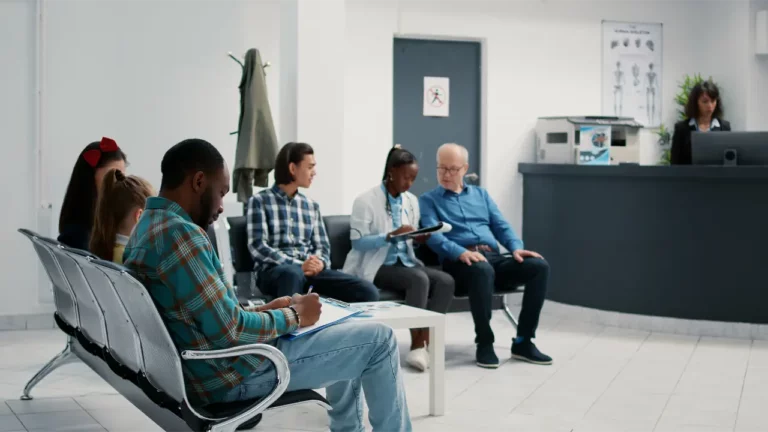The healthcare landscape is undergoing a significant shift towards value-based care, where providers are rewarded for patient outcomes rather than the volume of services delivered. Remote patient monitoring (RPM) has emerged as a powerful tool in this paradigm, enabling proactive chronic disease management and improved patient engagement. Recognizing this value, the Centers for Medicare & Medicaid Services (CMS) has established specific RPM policies for Medicare beneficiaries. However, navigating these policies and maximizing their benefits requires a strategic approach.
This comprehensive guide dives deep into best practices for healthcare providers utilizing CMS’s RPM services. By following these guidelines, you can ensure compliance, optimize reimbursement, and ultimately deliver a more effective and efficient model of chronic disease management.
Understanding CMS RPM Policies
CMS has established specific guidelines and codes for RPM services that healthcare providers must follow to ensure compliance and reimbursement. These policies cover the types of devices that qualify for RPM, patient eligibility, billing codes, and documentation requirements. Understanding these guidelines is the first step towards effective implementation of RPM services.
Key CMS RPM Codes and Requirements
- CPT Codes: CMS has designated specific Current Procedural Terminology (CPT) codes for RPM services. These include:
- 99453: Initial setup and patient education on the use of the monitoring equipment.
- 99454: Supply of devices with daily recording or programmed alert transmissions.
- 99457: Remote physiologic monitoring treatment management services, with at least 20 minutes of clinical staff/physician/other qualified healthcare professional time in a calendar month.
- 99458: Additional 20 minutes of RPM treatment management services.
- Patient Eligibility: To qualify for RPM under the extended COVID-era CMS rules through 2024, patients must meet specific criteria. The patient must be an established patient, meaning they have previously had a new patient Evaluation and Management (E/M) service, which can be conducted via telehealth. Additionally, patients can have chronic, acute conditions, or both.
- Device Requirements: CMS requires that devices used for Remote Patient Monitoring (RPM) must meet specific criteria to qualify for reimbursement. These devices must be medical devices as defined by Section 201(h) of the Federal Food, Drug, and Cosmetic Act. This means the devices should be reliable, valid, and capable of automatically collecting and transmitting patient data electronically without patient intervention. Ensuring compliance with these requirements is crucial for maintaining data integrity and patient safety.
- Data Collection Requirement: According to the 2024 Final Rule, practitioners must collect at least 16 days of data per 30-day period for RPM codes 99453, 99454, and RTM codes 98976, 98977, and 98978. However, this requirement does not apply to treatment management codes 99457, 99458, 98980, and 98981.
- Established Patient Requirement: RPM services require an established patient relationship. Under CMS’ rule clarification, patients who received RPM services during the Public Health Emergency (PHE) are considered established patients. RTM services, on the other hand, do not explicitly require an established patient relationship, though CMS suggests that these services should follow the creation of a treatment plan.
Best Practices for Implementing CMS RPM Services
1. Develop a Comprehensive RPM Program
Creating a structured RPM program ensures consistency and compliance. This program should outline the goals of RPM, patient selection criteria, device management protocols, and data handling procedures. A well-defined program provides a roadmap for the entire healthcare team.
2. Select Appropriate RPM Devices
Choosing the right devices is crucial. The selected devices must be user-friendly for patients, integrate seamlessly with the provider’s electronic health records (EHR) system, and meet CMS requirements. Consider devices that offer reliable data transmission and have a strong support system for troubleshooting issues.
3. Educate Patients and Staff
Education is key to the success of an RPM program. Patients need to understand how to use the devices and the importance of their engagement in the monitoring process. Staff should be trained on how to set up devices, interpret data, and respond to alerts. Regular training sessions can help keep everyone updated on the latest protocols and technologies.
4. Ensure Data Accuracy and Security
Accurate data collection and secure data transmission are paramount. Implement procedures to regularly check device functionality and data accuracy. Use secure channels for data transmission to protect patient privacy and comply with HIPAA regulations.
5. Implement Effective Patient Engagement Strategies
Patient engagement is a critical component of successful RPM programs. Providers should maintain regular communication with patients, offering support and addressing any concerns promptly. Utilizing patient portals and mobile apps can enhance engagement by providing patients with easy access to their health data and facilitating communication with their healthcare team.
6. Monitor and Analyze Data Continuously
Continuous monitoring and data analysis enable timely interventions. Establish a routine for reviewing patient data and responding to any abnormalities or alerts. Use analytics tools to identify trends and patterns that can inform treatment decisions and improve patient outcomes.
7. Optimize Billing and Reimbursement
Understanding and optimizing billing processes is essential for maximizing reimbursement. Ensure that billing staff are familiar with the CMS RPM codes and requirements. Regularly review billing practices to identify and address any issues that could lead to denied claims.
Checklist for Providers
- Program Development: The provider must develop a comprehensive RPM program outlining goals, patient selection criteria, and protocols.
- Device Selection: Chose FDA-approved, user-friendly devices that integrated with their EHR system.
- Education: Conducted training sessions for both patients and staff.
- Data Accuracy: Implemented regular checks and secure data transmission practices.
- Patient Engagement: Used mobile apps and patient portals for continuous engagement.
- Data Monitoring: Established a routine for continuous data review and analysis.
- Billing Optimization: Ensured billing staff were knowledgeable about CMS RPM codes and conducted regular billing practice reviews.
Integrating DrKumo Solutions with CMS RPM Services
DrKumo offers cutting-edge digital health solutions that align seamlessly with CMS RPM guidelines, facilitating effortless home health monitoring. Certified by URAC, DrKumo’s technology incorporates advanced real-time monitoring, Disease Management Protocols (DMP), and AI/ML capabilities, empowering patients to manage their health proactively. This robust platform ensures timely and effective interventions by healthcare providers, enhancing patient outcomes and compliance with CMS policies. By leveraging DrKumo’s solutions, healthcare providers can optimize their RPM programs for better reimbursement and improved patient care.
DrKumo’s RPM platform supports a wide range of FDA-approved medical peripherals, such as blood pressure monitors, glucometers, pulse oximeters, and weighing scales, all featuring secure data transmission compliant with HIPAA regulations. These devices are designed for ease of use and integrate seamlessly with the Intelligent Cloud Service, ensuring accurate data collection and enhanced patient engagement. Utilizing DrKumo’s comprehensive RPM solutions helps providers meet CMS RPM codes and requirements, streamline billing processes, and maximize reimbursement opportunities. For more information, visit Remote Patient Monitoring, Disease Management Protocols, and Chronic Care Management.
Conclusion
Implementing CMS RPM services effectively requires a thorough understanding of CMS policies and a strategic approach to program development, device selection, education, data accuracy, patient engagement, and billing optimization. By following these best practices, healthcare providers can ensure compliance, enhance patient care, and maximize reimbursement.
To learn more about how DrKumo’s advanced RPM solutions can help you navigate CMS RPM policies and maximize reimbursement, contact DrKumo at info@drkumo.com or visit their website at DrKumo.
Disclaimer: This content is for informational purposes only and should not be considered medical or legal advice. Always consult with a qualified healthcare provider or legal professional regarding any medical or compliance questions.








